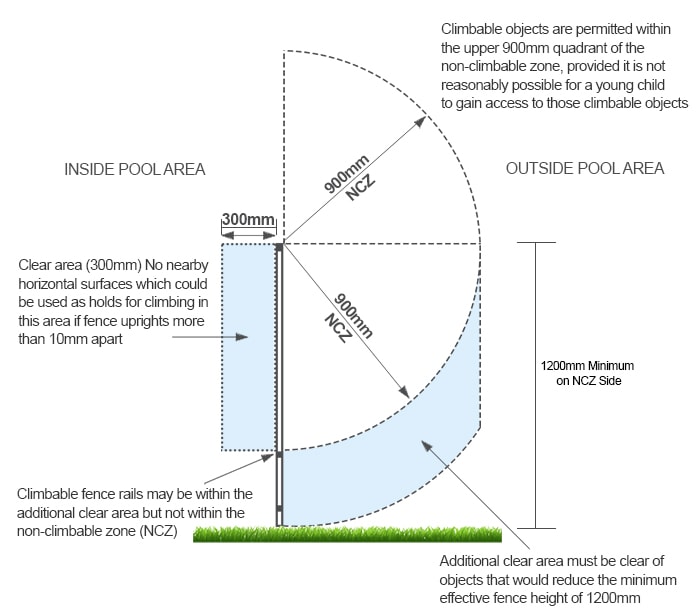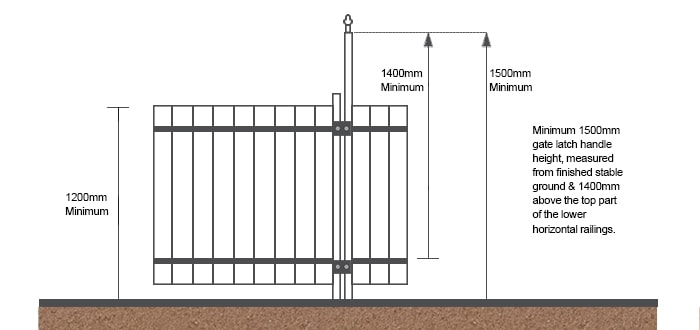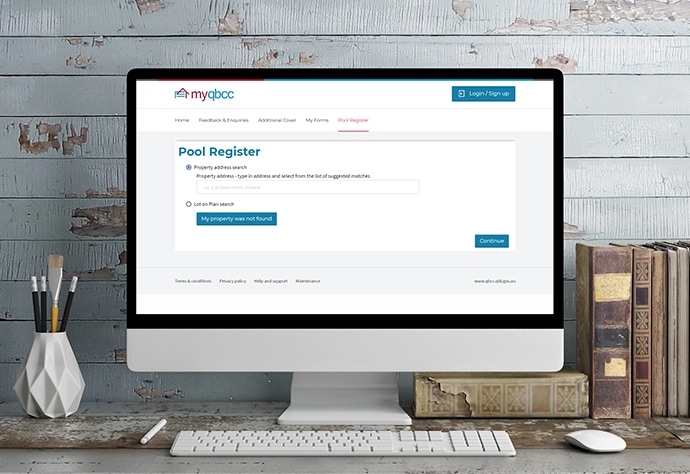Pool Safety Inspection Albany Creek
Pool Inspections in Albany Creek
Any Pool.
Any Size.
One Price.
Certificate Included!
Real Time! Instant Booking!!

Any Pool.
Any Size.
One Price.
Certificate Included!
Fully Licensed & Insured
Pool Safety Inspection Albany Creek
Need a Pool Safety Certificate in Albany Creek?
Our services include Pool Safety Inspections and Pool Safety Consulting. All pool inspections are performed by in-house licensed pool safety inspectors… we don’t sub-contract! We guarantee that your pool safety barrier will be inspected in compliance with your local legislation.
Before you book your pool safety inspection with us, we do ask that you let your neighbours know we are coming. No one likes to see unexpected visitors on their property.
Lets make a start…

Services in Albany Creek
Pool Safety Inspections
Pool Fence Consulting
Water Testing
Is Your Fence Compliant..? Checklist...
Download.
Our Guide.
Pool Fence Regulations
How to Register your Swimming Pool.
Step 1. Visit Pool Register – QBCC
Step 2. Find Property by address or lot number.
Step 3. Select ‘Your Property Address’.
Step 4. Click ‘Register Pool’.
Step 5. Enter your details & ‘Submit’. Check any confirmations… Done!
Check your email
Do I need a to renew my Pool Certificate?
However, there is an alternative option, where the ‘seller’ can attach a ‘form 36 – notice of no pool certificate’ to the property sale. This means the new property owner will have 90 days to engage with a licensed pool safety inspector, with the intent of conducting a pool safety inspection.
Expired Pool Safety Certificates do not need to be renewed unless you are selling, leasing or have made significant changes to your pool fence. Changes to pool barriers which exceed values in the description below, will require a pool safety inspection.
Minor repairs
- Self Assessable work – Up to 2.4m & including no more than 2 posts
- BSA Licensed – Up to 5m & including no more than 6 posts.
more information – Building Regulations 2006
Check out page 46 – Guidelines for pool owners and property agents
How long does a Pool Safety Certificate last?
- Non-Shared Pool certificates are valid for 2 years from the issued date.
- Shared Pool certificates are valid for 1 year from the issued date.
Whats the difference?
Shared pools are accessible by more than one dwelling, such as hotels, motels, backpackers, complex, caravan parks.
Is Your Fence Compliant..? Checklist...

Pool Fence Regulations Qld
Pool Safety Requirements
Non-Climbable Zones in Qld
What are non-climbable zones or ‘NCZ’?
What is classed as a ‘stepping point’?
Objects, projections & indentations which have a depth of 10mm or more which could be classed as a stepping point. Stepping points & objects can be used as an aid for a young child to climb, scale & compromise a pool’s safety barrier.
Difference between ‘Clear Area’ & ‘Additional Clear Area’
- Clear Area – The clear area is a depth of 300mm & a length of 900mm. It is directly adjacent to the 900mm ncz, inside the pool area.
- Additional Clear Area – The ‘Additional Clear Area’ is a zone which can effectively be applied above or below the non climbable zone (or both) providing the ‘non climbable zone’ & the ‘additional clear area’ equates to 1200mm. This is to maintain the effective height of the safety barrier. (see diagram below)
Pool Safety Inspection Tip #1
1.2 Measure 300mm into your pool area & look for objects within the ‘Clear Area’
1.3 Look out for taps, gas pipes, tree branches, BBQ’s, decorative walls etc around the barrier.

Pool Fence Height Requirements Qld
Minimum Pool Fence Height?
Minimum Distance Between Lower & Upper rails
Maximum Gaps Under the Pool Fence
Pool Safety Inspection Tip #2
2.2 Decorative gravel under a pool fence is usually non-compliant
2.3 Where fencing ‘steps up’ , check that the highest lower rail & the lowest upper rail are not within the 900mm NCZ.

Boundary Pool Fence Requirements Qld
Is there a Minimum Boundary Fence Height?
When Non-climbable Zones are on the inside the Pool Area.
Intersecting Pool Fences
Timber Pool Fence Horizontal Rails
Splash Proof Fencing Regulations (new builds only)
Pool Safety Inspection Tip #3
3.2 Take more control: Boundary fences with Non-climbable zones on the inside vs having them on your neighbours side.
3.3 Look out for gaps ≥10mm between palings, where horizontal rail are on the opposite side which could be used as a foothold.

Pool Latch Requirements
Minimum Pool Latch Height
Latches located on the inside of the pool area such as glass pool gates, must be located ≥150mm from the top of the pool gate providing there is no hand-hole.
Self Latching & Self Closing Pool Gates
Operational Direction?
Pool Safety Inspection Tip #4
4.2 Tighten any pool gate springs which may be preventing the pool gate from self closing efficiently.
4.3 Check the gate lock mechanism cannot be locked when in an open position.

CPR Pool Sign Rules – Queensland
Minimum Dimensions
- Cardiopulmonary resuscitation signs or (CPR Signs) must be at least 300mm by 300mm.
- Made from weatherproof & durable material.
- Visibly displayed near or inside the pool area.
- Must be securely fixed.
- Shows how to perform CPR techniques in accordance to current guidelines.
Which Guideline does the Pool Safety sign follow?
Existing pools with CPR signage following ‘Guideline 7‘ is acceptable providing it hasn’t faded or become defected. However, a ‘Guideline 7’ sign must not be replaced with another ‘Guideline 7’ and must be replaced with an updated ‘Guideline 8’ version.
Pool Safety Inspection Tip #5
5.2 Ensure its securely fixed
5.3 Check to see if any parts of the sign has faded
Buying a Property with a Pool… Does the Fence look Neglected?
Properties with a valid pool certificate.. Doesn’t mean the ‘Pool Fence’ is 100% compliant… Why?
What to look out for…
- Broken fence panels.
- Neighbours have altered their side of the fence & made the pool area non-compliant.
- Wear & Tear.
- Non-compliant areas missed during initial inspection.
- Over grown trees & shrubs.
Pool Safety Inspection Tip #6
6.2 Ensure the gate self latches & closes.
6.3 Check for over grown trees & shrubs resting on the pool fence.
Pooltech Services – Albany Creek
Services we provide in your area
- Pool Safety Inspection Albany Creek
- Pool Consulting Albany Creek
- Real Estate Pool Inspection Albany Creek
- Property Owners – Pool Safety Inspections
Ready for a Fence
Inspection?
Ready for a Fence
Inspection?
Ready... for us to inspect your fence?


Social Media
Trading Hours
| Mon-Fri | 8am-4pm |
| Saturday | Closed |
| Sunday | Closed |
Business Location
Indooroopilly, Brisbane, QLD, 4068
Phone
Our Services
© Copyright 2020 | Pooltech | All rights reserved
PSI Licence No. PS15153330 | ABN 24 603 270 151 | Pooltech

